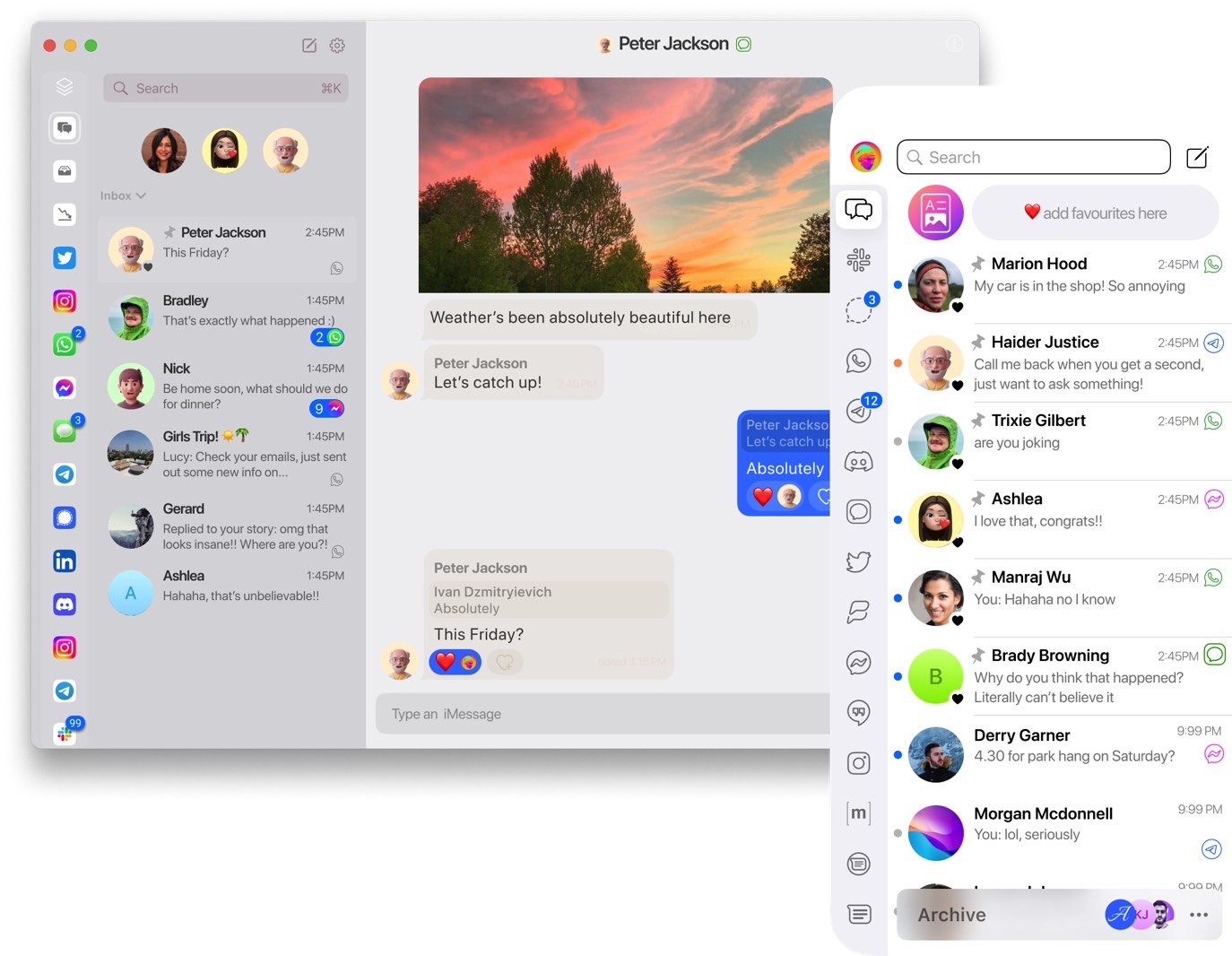I told you recently that I’m a longtime iPhone user who is not interested in RCS-iMessage interoperability. I’ve never had a blue vs. green bubble problem when keeping in touch with my contacts who are on iPhone or Android. We never use SMS, and most chats occur through encrypted apps like iMessage and WhatsApp. And everyone is happy. We never felt like we couldn’t get in touch or enjoy rich messaging just because some people use iMessage on iPhones and others have Android devices.
The European Union might force all the big chat platforms to work together, which could lead to Apple incorporating RCS support in iMessage. But until we get there, you have to try a new universal chat app called Beeper.
The app wants to lump all of your chats across multiple apps into a single place, which sounds like a dream app. And thanks to the way it incorporates iMessage support, it might let you run iMessage on your Android phone, even though that’s not the main purpose of Beeper.
Beeper is an invite-only app for the time being, so you can’t install it on your devices right away. But you can run Beeper on Mac, Windows, Android, and iPhone, and Gizmodo had access to it.
Which chat apps work with Beeper?
Beeper currently supports 15 apps, including iMessage. Here’s the full list: Whatsapp, Facebook Messenger, Twitter, iMessage, Android SMS (does that mean RCS?), Telegram, Signal, Beeper,vSlack, Google Chat, Instagram, IRC (Libera.chat), Matrix, Discord, and LinkedIn.
You could install just Beeper and then rely on it to keep in touch with contacts across all these apps. I said it’s a dream app, but it can also be a nightmare. Imagine all the notifications you’ll get from a single app.
I prefer the multi-app chat experience, though there is an advantage for Beeper. You’d have everything in one place. You’ll be more productive, and you’ll be able to search for all the information you’ve saved in chats in a single place.
What about privacy?
Speaking of privacy, all the messages exchanged through Beeper will be end-to-end encrypted. That means Beeper could add strong encryption to services that don’t have it, like Facebook Messenger. As for already end-to-end encrypted chat apps (iMessage, WhatsApp, and Signal), they get re-encrypted. That’s a second layer of encryption.
Beeper says on its website that it doesn’t want to profit from user data, and that it won’t show ads. It won’t collect any data, that is. That explains the strong encryption:
We are building the best chat app on Earth. No ads. No siphoning and selling personal data. No BS. We sell an optional paid subscription with premium features. Our business model means that our interests are 100% aligned with our customers.
Beeper will also let you save encrypted backups, which nobody can access. Not even you if you forget your Beeper password.

Nothing is free on the internet, but Beeper will offer limited free access to its app. Of course, it’ll have to make money somehow. Beeper Plus, priced at $5 to $10 and launching later this year, might be how Beeper keeps the lights on.
The Beeper experience
I haven’t used Beeper yet, but the experience seems straightforward. You get a clean interface (see the screenshot above) that features all the chat apps you want to add. Then you can continue conversations in Beeper just like you would in your regular chat apps. Each chat will be marked accordingly, with the app showing you where it’s coming from.
Also, Gizmodo found out that setting up chat apps takes a few minutes, including the ones that need two-factor authentication. For iMessage, you’ll connect to one of Beeper’s Mac minis which will act as your iMessage home. Needless to say, this implementation defeats the purpose of end-to-end encryption.
Most chat app features will work fine in Beeper, though certain features might need you to use the original app:
You’ll find a lot of messenger app features are supported, but not all of them. Sending and receiving messages, group chats, images and videos, emoji reactions, adding contacts and other basics all generally work fine; more complicated or advanced features, such as video calls and group polls, aren’t available. In some cases you’ll need to go back to the original app to complete a task.
Also, you can’t sync contacts across apps, although you probably don’t need to at this point.
How to get iMessage on Android
Gizmodo doesn’t mention this trick, but I suspect it works, considering how Beeper handles everything.
To get iMessage on Android via Beeper, you’d need to create an Apple ID account and set it up to work on iMessage using your email address only. Borrow an iPhone from a friend for this step to set up iMessage to work only with your Apple ID email address, not a phone number. Or use an iPad to do it.
Then, use Beeper to sign into your iMessage account, and run the Beeper app on Android. This should get you access to iMessage on Android for as long as Beeper is in business.
But Gizmodo said that using iMessage on Beeper isn’t very smooth right now. You’ll get prompts that someone else is logged into your account. Also, Apple might end up blocking the whole thing since it might violate Apple’s terms of use. Beeper also makes no mention of running iMessage on Android, but the implication is there.
That said, you’d have to get access to Beeper first, so head on to this link to get started. Also, I’ll remind you of Sunbird, an app that actually promises iMessage support on Android.








